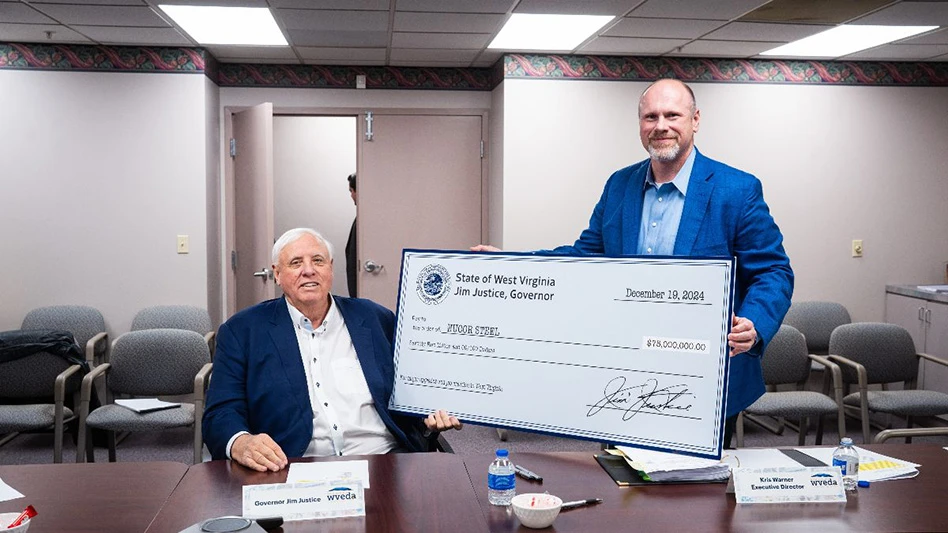Participants Consider a Half Century of Changes to the Industry
On April 28, 2009, Recycling Today convened nine scrap industry veterans for a discussion called the Heritage Roundtable.
The event, sponsored by Metso Recycling, was held at the Mandalay Bay Resort & Casino during the 2009 Annual Convention of the Institute of Scrap Recycling Industries Inc. Moderators Brian Taylor and Jim Keefe of Recycling Today asked the assembled panel to consider several aspects of how the industry had changed and how they might advise those who will be in scrap industry leadership positions today and in the future. The participants were:
• Richard Abrams, Consolidated Scrap Resources, York, Pa.
• Yale Dorfman, State Metal Industries, Camden, N.J.
• Irving Ehrenhaus, Glenrich Metals, Forest Hills, N.Y.
• Kalman Gordon, L. Gordon Iron & Metal Co., Statesville, N.C.
• Harry Kletter, ISA Inc., Louisville, Ky.
• Stanley Kramer, Kramer Metals Inc., Los Angeles
• Ira Moskowitz, Moskowitz Bros. Inc., Cincinnati
• Stanton Moss, Stanton A. Moss Inc., Bryn Mawr, Pa.
• Larry Sax, Recycling Today Global Edition, contributing editor and retired nonferrous scrap trader.
Recycling Today: How has the geography of scrap and scrap flows changed during the time you have been involved with the scrap industry?
Richard Abrams: Demand worldwide has been more consistent for the last eight or 10 years, especially from China. The Chinese phenomenon is going to continue for a while until their infrastructure and their middle class’s demand for consumer products is satisfied, and I think they’re a long way from that. I haven’t visited there, but I understand it’s quite a sight to see an entire highway system being built at one time.
Yale Dorfman: Many years ago, the Japanese came in and bought a lot of scrap. Now the Chinese are coming in and they are establishing footholds, buying scrap yards in New York and elsewhere all through the country. They’re staying here and opening up their own operations. I don’t recall that happening previously when other nations like Japan and Taiwan were emerging as buyers. It gives Chinese buyers the ability to buy small loads and a lot of different materials—motors, aluminum, wire. They’re buying mixed loads.
Irving Ehrenhaus: I think our industry is suffering similarly as all other industries in this country. All have the same basic problem. You can talk about efficiency, but the United States can’t compete with those labor rates they have. We thought we couldn’t compete with Mexico, and then China came in, and Mexico couldn’t compete with them. We are now dependent on China for everything.
Stanley Kramer: I’d like to make a comment about the cheap labor they have in China and how we can’t compete. It seems to me that all the American automobile manufacturers decided that to compete with the foreign automakers they would open plants overseas, and they have built plants in China and Mexico and other nations using cheaper labor to make their products. But that hasn’t stopped them from entering into bankruptcy. The Japanese companies opened plants in the U.S., and they’re making cars and making millions of dollars. I don’t think it’s a matter of cheap labor as much as it is efficiency. The Asian companies are running efficient plants. I think what it really boils down to is that we have to adapt to that kind of concept—being efficient.

Explore the November 2009 Issue
Check out more from this issue and find your next story to read.
Latest from Recycling Today
- IDTechEx sees electric-powered construction equipment growth
- Global steel output recedes in November
- Fitch Ratings sees reasons for steel optimism in 2025
- P+PB adds new board members
- BlueScope, BHP & Rio Tinto select site for electric smelting furnace pilot plant
- Magnomer joins Canada Plastics Pact
- Out of touch with reality
- Electra names new CFO





